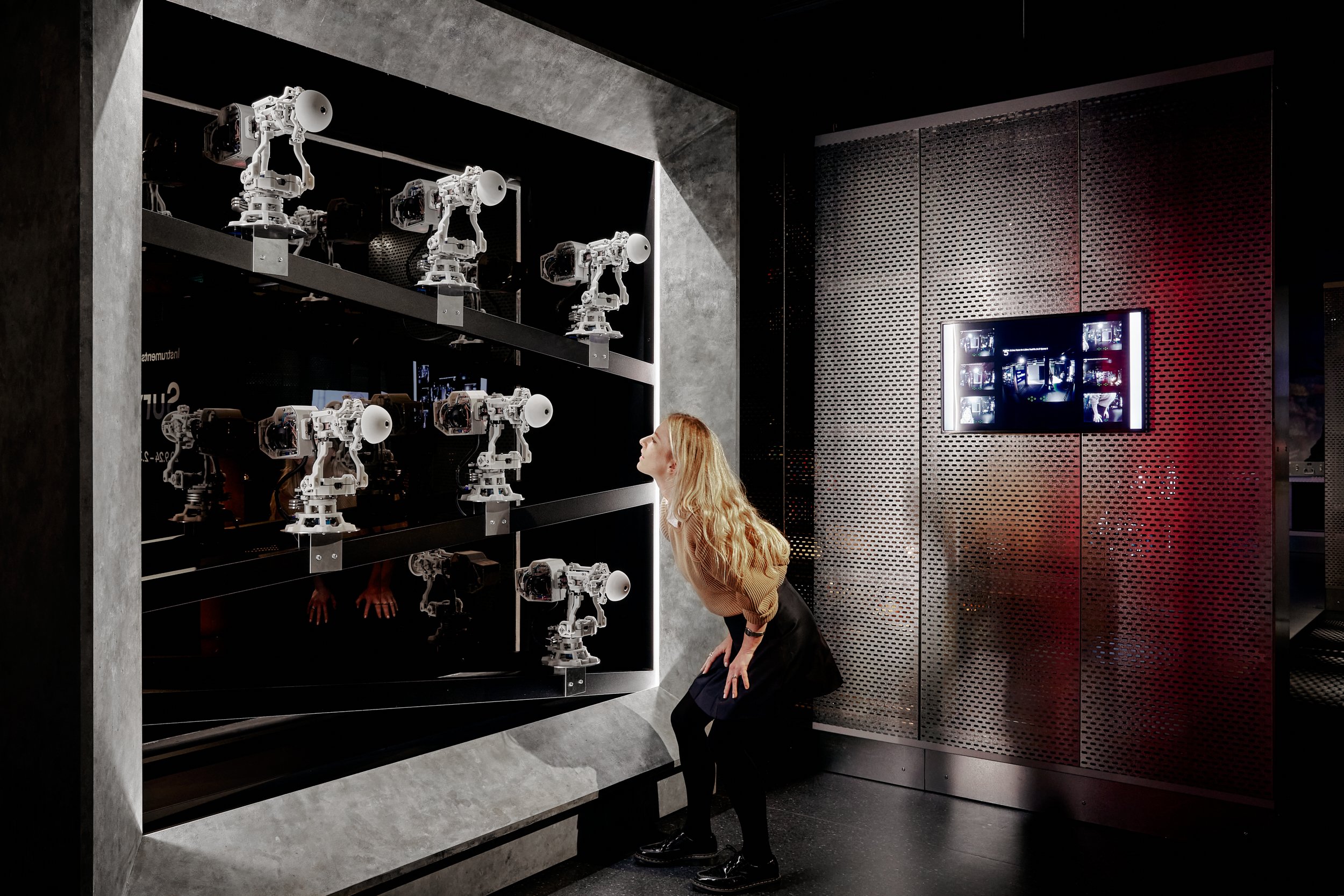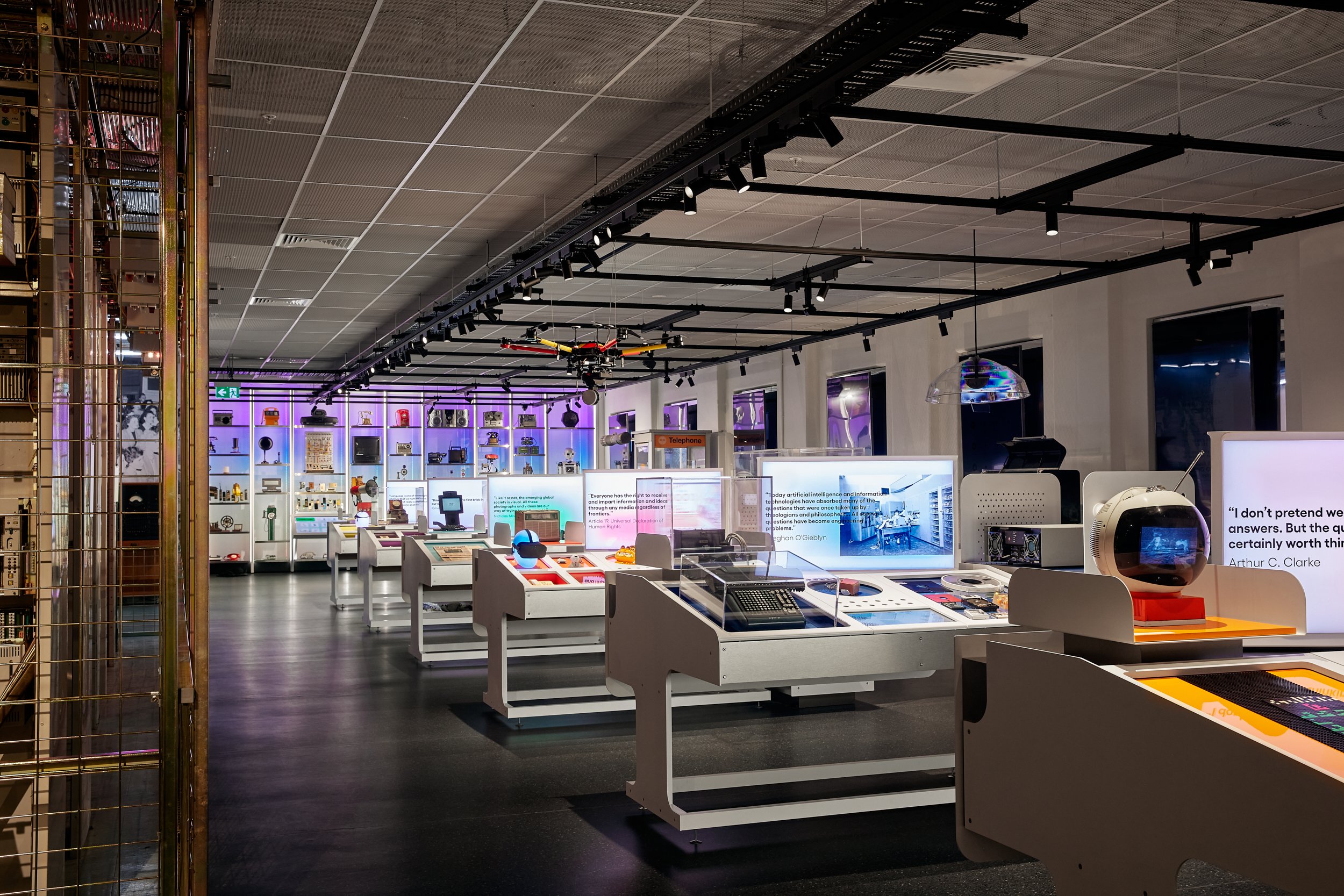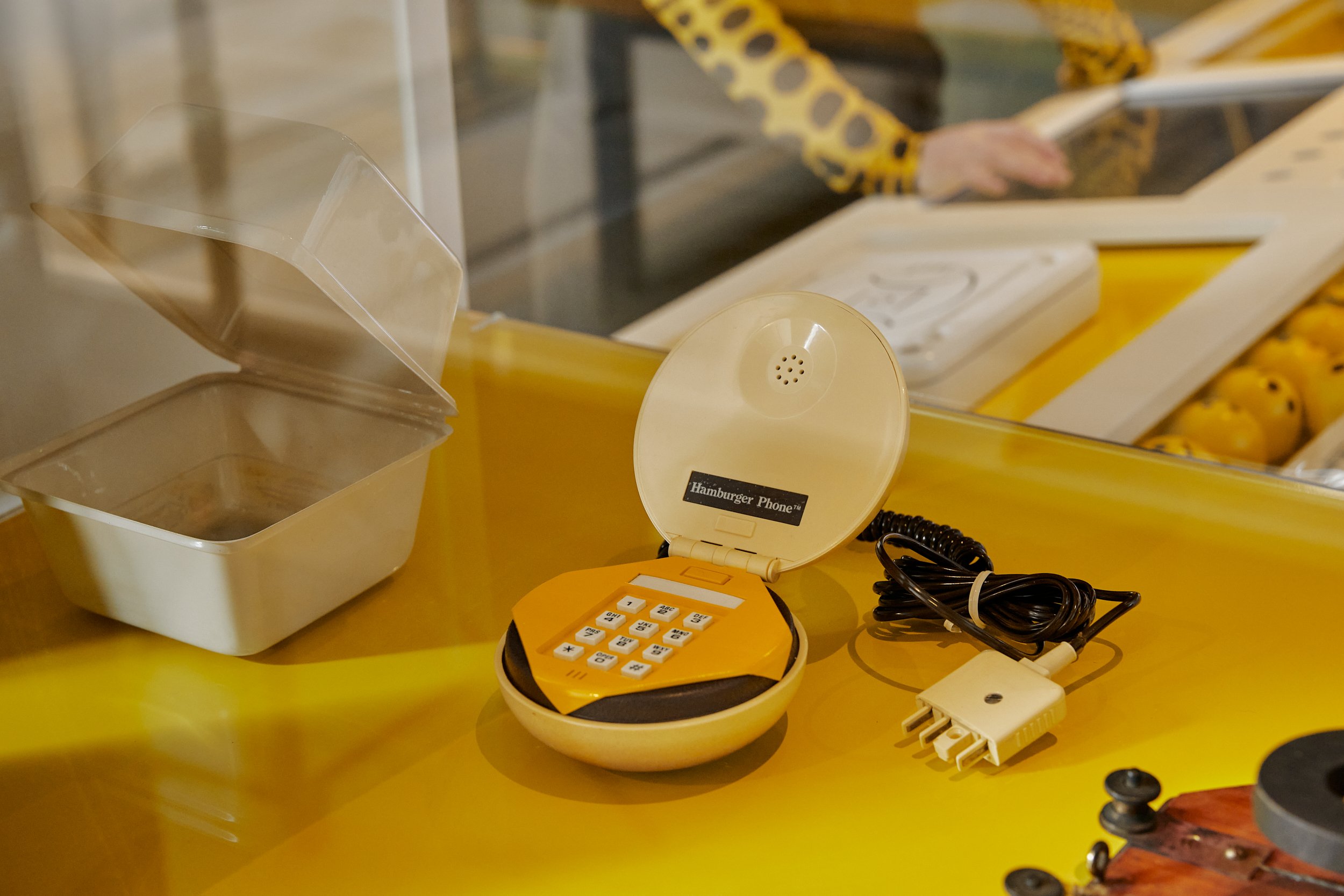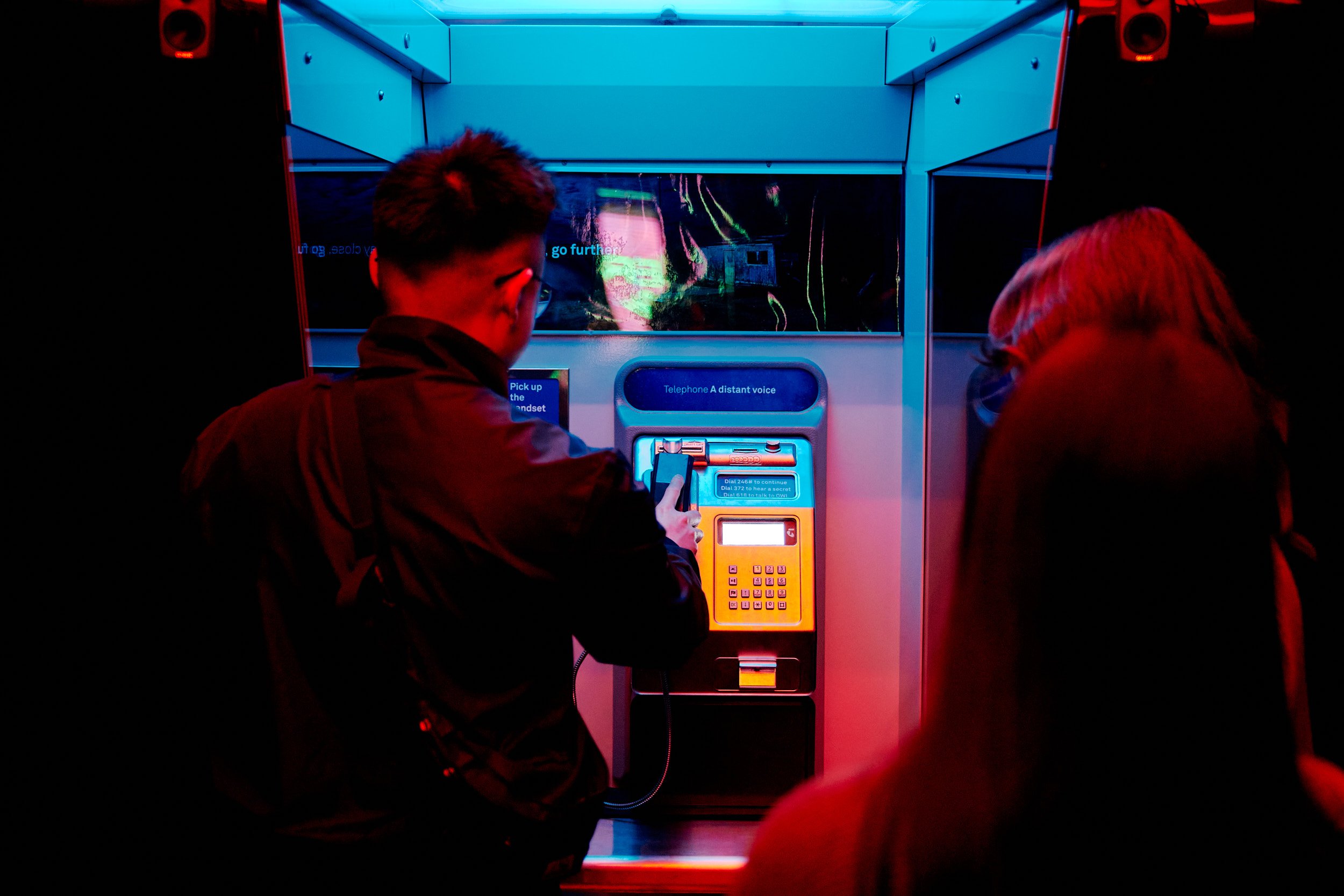PROJECT
National Communication Museum
2024
YEAR
The National Communication Museum is the newest major museum to open in Melbourne in the last 25 years. NCM is located in a former telephone exchange building in Hawthorn, Victoria - and explores the past, present, and future of the technology that connects us.
Over the course of four years, Studio Peter King crafted the exhibition design for NCM, creating an immersive experience that highlights the evolution of communication technology. Designed to captivate visitors from their first steps into the museum, the introductory installation features rear-projected glass panels that conceal a deconstructed showcase with a custom rotary dial, offering an interactive journey through the museum’s collection and themes.
The temporary exhibition galleries on the ground floor extends a signature approach to industrial-inspired design present throughout the museum. Using modular walls clad in perforated metal and exposed fittings, the space pays homage to the building’s history as a former telephone exchange. The inaugural exhibition Instruments of Surveillance presents objects and images in a variety of new showcases and display furniture. This suite of walls and cases provides an adaptable design that enables future reconfigurations, balancing aesthetics with functional versatility.
On the top floor of the museum, the exhibition design extends into the permanent collection, where vibrant colours and distinctive forms tell the story of computing and communication. A standout feature of the permanent collection is an interactive ‘conversation’ desk. Inviting visitors to touch, look and listen, these desks combine objects together with touch screens and audio handsets. Each of the six desks prompt visitors with a themed question - unfolding the collection’s story through a chat-style narrative.
Client: National Communication Museum
Curated by: Emily Siddons, Jemimah Widdicombe
Exhibition Design: Studio Peter King
Experience Design: Zoe Mars
Digital Design: Melanie Huang | Grumpy Sailor | Rob Graham & NCM digital team
Graphic Design: Clear | Forde + Nicol | Steph Yap Design | Studio Mass
Project management: Megan Cassar
Architectural Base-Build Design: Carr
Exhibition Build: Show Works | Prop Art
Lighting: Bluebottle
Mounts: Christian Bishop; Otherly
Graphics: Decently Exposed
Exhibition photography: Casey Horsfield
Housed in a former 1930s telephone exchange building, the museum has two levels of interactive exhibits. In its permanent exhibition is a fully interactive cyber cafe from the ’90s; its computers can be used to surf the web, play retro games and chat on MSN Messenger.
There’s also Lone Phone, a single payphone in a neon-lit space with an accompanying soundscape. Put the phone to your ear, punch in some numbers, and a mysterious voice might tell you a secret.
Then there’s an enormous telephone switchboard, which visitors can interact with via rotary phones. Plus, a Morse code telegraph key and the burger phone from the movie Juno.
The museum itself took four years to open, a time which, as NCM’s other co-CEO Anna Prenc points out, has covered an interesting period for digital communication. “Communication technologies are not just tools, but profound agents of societal evolution,” she says in a statement. “In the time it’s taken for NCM to open, Chat GPT was developed, launched and now has over 185 million users worldwide.”…
In a smaller exhibition room, visitors can listen to the speaking clock – the telephone-accessed audio clock that was once a mainstay of telecommunications in Australia before it was decommissioned in 2019. You’ll hear the familiar voice of radio broadcaster Gordon Gow, while a humanoid robot, Diamandini, moves around creating her own sounds in response.
Diamandini was outshone at the museum’s opening day by the world’s first robot citizen Sophia. Visitors were encouraged to take selfies with her and ask about her favourite exhibits. If you missed it, hopefully Sophia will pop by again in the future.
Siddons says the celebrity encounter was designed to prompt audiences to consider the role AI plays in all our lives, “and how we will develop ethical human-robot relationships for our future”.






















































